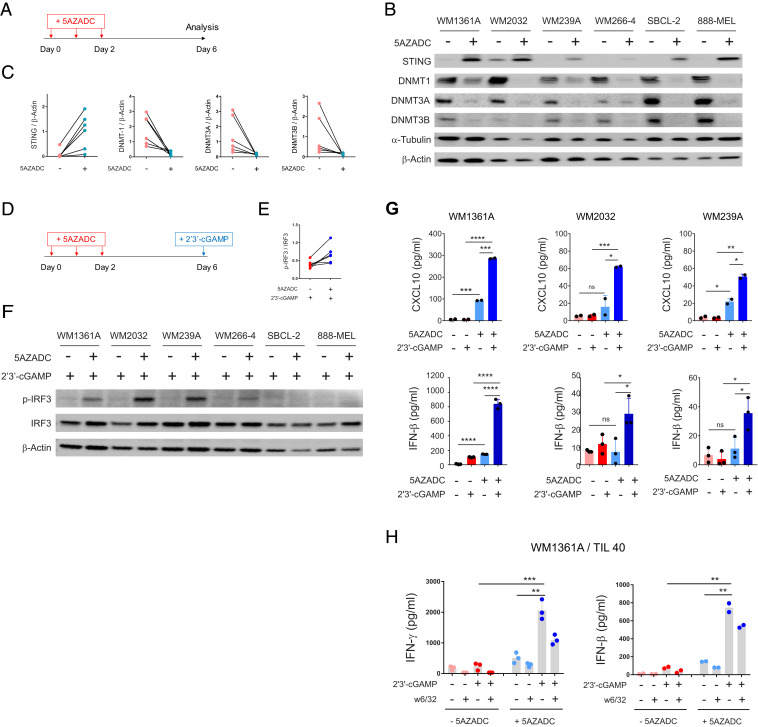Fig. 3.
Reconstitution of STING expression through DNA demethylation can rescue STING signaling in human melanoma cell lines. Experimental setup for 5AZADC treatment of STINGabsent human melanoma cell lines at indicated time points (A). Immunoblot analysis of STING, DNMT1, DNMT3A, and DNMT3B expression in human melanoma cell lines with or without 5AZADC treatment. α-Tubulin and β-Actin were used as loading controls (B). Ratio of total STING, DNMT1, DNMT3A, and DNMT3B relative to β-Actin for each cell line with or without 5AZADC treatment (C). Experimental setup for 5AZADC treatment and 2’3′-cGAMP stimulation of STINGabsent human melanoma cell lines at indicated time points (D). Ratio of p-IRF3 relative to total IRF3 (E) and immunoblot analysis of p-IRF3 and IRF3 in indicated melanoma cell lines after 4 h stimulation with 2’3′-cGAMP (F). Induction of CXCL10 (Top) and IFN-β (Bottom) in cell culture supernatants measured using ELISA and reported as mean ± SD for two or three biological replicates (G). WM1361A melanoma cells with or without 5AZADC pretreatment were cocultured with HLA-matched human melanoma TIL 40 in the presence or absence of 2’3′-cGAMP. In some experimental conditions, tumor cells were preincubated with an MHC class I blocking Ab (W6/32) to determine whether IFN-γ release was mediated by CD8+ TIL T-cell receptor engagement with peptide/MHC class I. Coculture supernatants were collected after 24 h, and IFN-γ and IFN-β concentrations were measured using ELISA and reported as mean ± SD for two or three biological replicates (H). Statistical significance was determined by unpaired t test (*P < 0.05; **P < 0.01; ***P < 0.001; ****P < 0.0001; ns, not significant).

